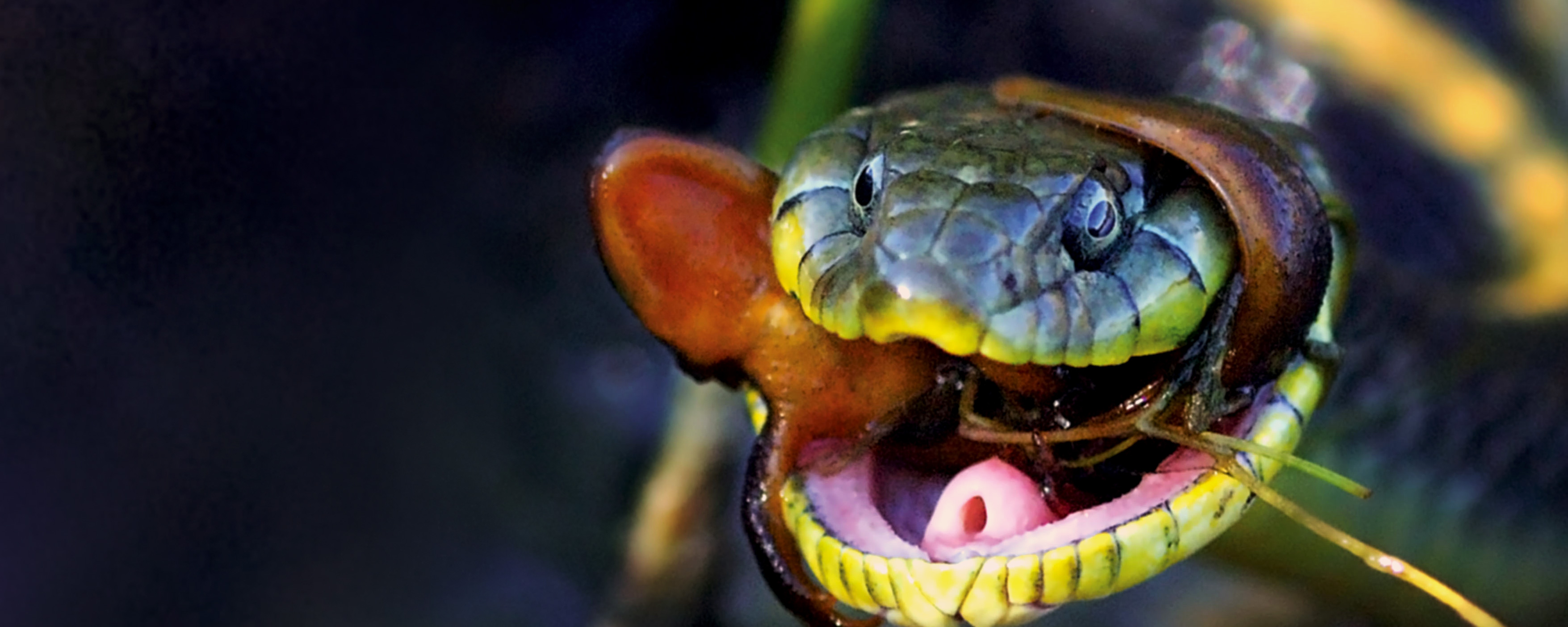A select group of garter snakes can thank their ancestors for the ability to chow down on a poisonous newt and live to catch another meal.
Common garter snakes, along with four other snake species, have the ability to eat extremely toxic species of amphibians that would kill most predators – thanks to at least 100 million years of evolution. That is the finding of a team of researchers at the University of Virginia and several other institutions, including Virginia Tech.
The study is detailed in the latest issue of the journal Current Biology. The lead scientist, Virginia Tech biologist Joel McGlothlin, began the research four years ago as a UVA postdoctoral fellow working with UVA biology Professor Butch Brodie, one of the paper’s co-authors.
The research team discovered that the ability to withstand a toxin produced by one prey species, the rough-skinned newt, evolved following a “building blocks” pattern, whereby an evolutionary change in one gene can lead to changes in another.

Biologist Butch Brodie, director of UVA’s Mountain Lake Biological Station, co-authored the new paper on predator/prey co-evolution.
In this case, over time, amino acids in three different sodium channels found in nerves and muscle changed, allowing select snakes to resist the numbness and paralysis typically brought on by the toxin.
Resistant muscle gives snakes the best protection against the newt’s toxin, but there’s a catch: resistant muscle can only evolve in species that already have resistant nerves. The researchers found that the ancestors of garter snakes gained toxin-resistant nerves almost 40 million years ago.
“Resistance to deadly toxins often has to involve changes in many genes, but it’s unclear whether those changes evolve simultaneously or in a step-wise pattern,” Brodie said. “We’ve learned that in snakes, evolutionary doors opened deep in their history that enabled the later changes to have advantages, leading to an arms race between predators and prey.”
This arms race is most intense in pocketed regions along the West Coast, where rough-skinned newts and garter snakes co-exist and newts have evolved enough toxin to kill up to 20 humans.
The researchers sequenced three sodium channel genes found in 82 species (78 snakes, two lizards, one bird and one turtle) and mapped the changes they found to evolutionary family trees to date when toxic resistance emerged in each. They found that, as time went on, some groups of snakes built up more and more resistance to the toxin. These changes always happened in the same order, with resistant nerves evolving before resistant muscle.
Because a few bird species can also eat the newt and survive, the next step for the research is to see if this pattern is a general phenomenon in other species. A National Science Foundation grant will fund the investigation.
“We think that the garter snake’s evolved resistance to the newt’s toxin can be used as a model for understanding complex adaptations that involve more than one gene,” McGlothlin said.
Media Contact
Article Information
June 9, 2016
/content/extreme-resistance-one-snakes-prey-another-snakes-poison

